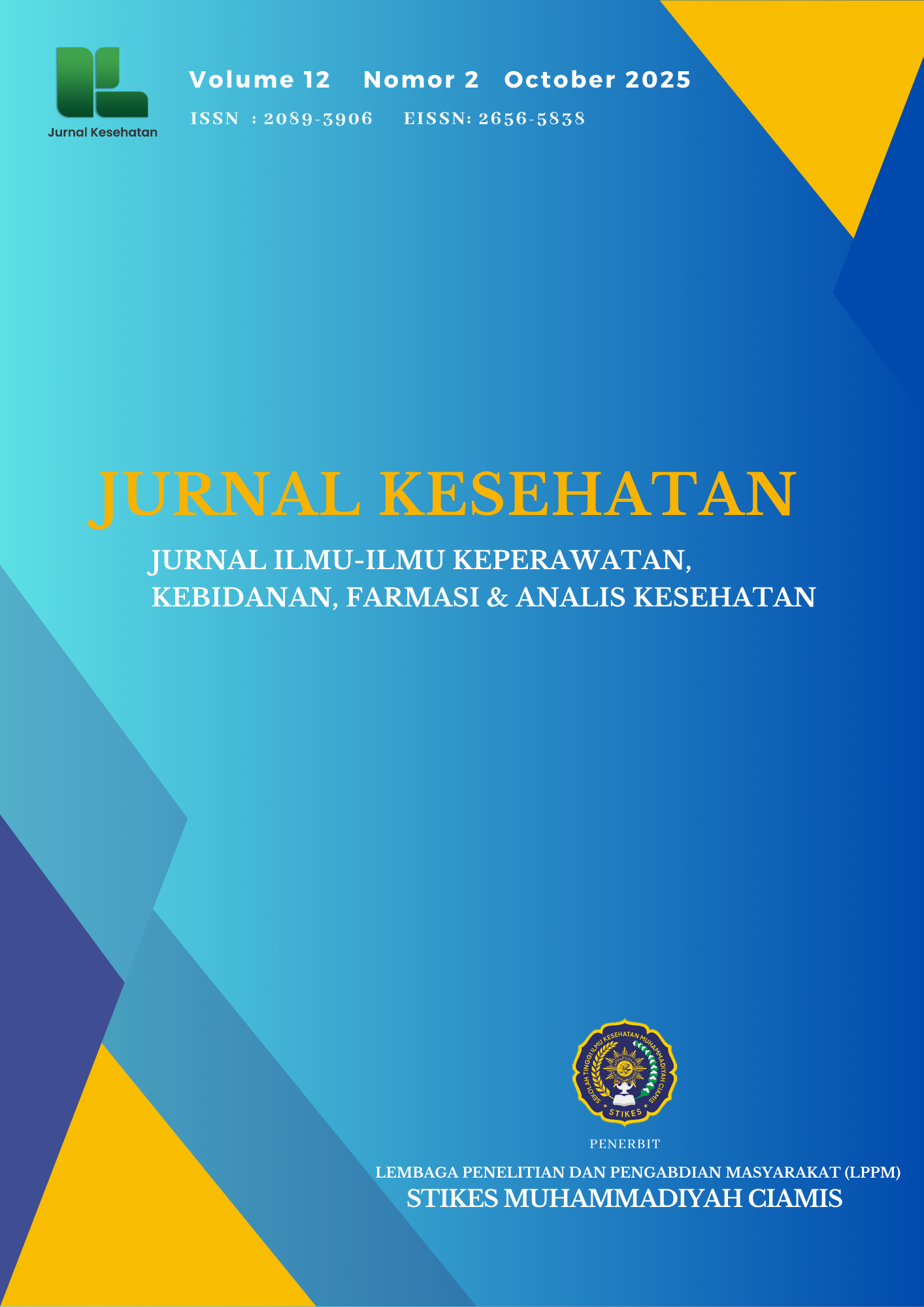The Relationship Between Internet Addiction and Anxiety Levels in Adolescents at SMA Islam Sabilal Muhtadin Banjarmasin
Main Article Content
Abstract
Excessive internet use among adolescents may affect mental health, including increasing anxiety. This study aimed to determine the relationship between internet addiction and anxiety levels among adolescents at SMA Islam Sabilal Muhtadin Banjarmasin. This study employed a quantitative correlational design with total sampling, involving all Grade X and XI students who met the criteria, totaling 50 respondents. Research instruments were the Internet Addiction Test (IAT) and the Hamilton Anxiety Rating Scale (HARS). Data were analyzed using Pearson correlation test. The results showed levels of internet addiction: none 6 (12.0%), mild 21 (42.0%), moderate 23 (46.0%); and anxiety levels: none 8 (16.0%), mild 24 (48.0%), moderate 14 (28.0%), severe 4 (8.0%). Pearson correlation yielded r = 0.665 with p < 0.001, indicating a positive and significant relationship between internet addiction and anxiety levels. Higher internet addiction scores were associated with higher levels of anxiety. It is recommended that schools and parents monitor internet use and implement mental health education programs for adolescents.
Article Details

This work is licensed under a Creative Commons Attribution 4.0 International License.
References
Association, A. P. (2022). Internet addiction and mental health in adolescents: Understanding behavioral patterns and risks. APA Publishing.
Hidayatullah, R. M. (2023). Kecanduan Internet Dan Kecemasan Komunikasi Terhadap Karakter Kerja Sama Pda Mahasiswa. PSYCOMEDIA: Jurnal Psikologi, 2(2), 123–134. https://doi.org/10.35316/psycomedia.2023.v2i2.123-134
Islamiaty, F. S. (2022). Pengaruh Self Control Terhadap Internet Addiction Pada Mahasiswa Fakultas Psikologi Universitas Islam Negeri Sunan Gunung Djati Bandung Pengguna Media Sosial Tiktok. UIN Sunan Gunung Djati Bandung.
Kiswantomo, K. A. (2020). Hubungan Antara Komponen-Komponen Subjective-Well Being Dan Internet Addiction. Humanitas (Jurnal Psikologi), 4(1).
Liu, W. (2023). The Correlation Between Internet Addiction and Anxiety Disorders: A Meta-Analysis. Journal of Affective Disorders, 249, 1–9.
Mellani, N. L. (2021). Gambaran Tingkat Kecemasan Anak Remaja Pada Masa Pandemi Covid-19 Di SMA Negeri 8 Wilayah Kerja Puskesmas III Denpasar Utara. Poltekkes Kemenkes Denpasar.
Saifuddin, A. (2023). Psikologi Siber: Memahami Interaksi Dan Perilaku Manusia Dalam Dunia Digital. Prenada Media.
Sharma, A., & Dixit, S. (2019). Anxiety, depression and stress among adolescents as consequences of excessive internet usage. Indian Journal of Mental Health, 6(2), 165–170.
Suryani, D. e. (2023). Assessing Internet Addiction and Anxiety Levels Among high School Students in South Kalimantan. Jurnal Keperawatan Sehat Lestari, 2(10), 98–103.
Vionie Florensia, A. C. (2023). Hubungan Antara Kecemasan Sosial dengan Kecanduan Internet pada Siswa-Siswi SMA. Jurnal Ilmiah Permas: Jurnal Ilmiah STIKES Kendal, 13(3), 975–978.
Widyastuti, A. D. (2022). Mengeksplorasi Pengalaman Remaja yang Cemas di Era Digital: Studi Kualitatif di Kalimantan Selatan.

